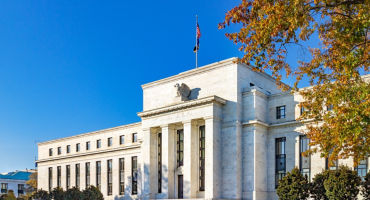- Director of Global Derivatives
Skip to main content
- Funds
- Insights
- Capabilities
- About Us
- My Account
Our Funds
Fund Documents
Global Multi-Strategy Fund
The views expressed are those of the author at the time of writing. Other teams may hold different views and make different investment decisions. The value of your investment may become worth more or less than at the time of original investment. While any third-party data used is considered reliable, its accuracy is not guaranteed. For professional, institutional, or accredited investors only.
An alternative version of Mark Zuckerberg’s famous “Move fast and break things” mantra has been making its way around the investment community lately, with the quote being rearranged to read: “Move fast and things break.” This may be trending in conversations because the recent pension-margin squeeze in the UK offers another example of the tendency for rapid changes in market assumptions to expose cracks in the overall financial system.
A story that’s already been written about too much this year has been the fairly mild response from equity volatility measures during this year’s drawdown in global equities. Over the past few weeks, with the markets reaching new year-to-date lows, we’ve started to see evidence of that staid behavior shifting, with equity volatility expectations finally showing some signs of life. I suspect that this “reawakening” may be about fears of larger macro and systemic risks that could rear their ugly heads as we get further away from the cozy low-interest-rate environment of the past decade-plus.
The fact that interest rates are rising isn’t news to anyone, but the speed with which it’s taking place is unusual and is starting to expose some systemic fragilities. Figure 1 displays the rolling one-year change in US rates: Over the past 60 years, we’ve only seen changes of this magnitude a handful of times, with only one period (the early 1980s) that featured a faster pace and the most recent coming in 1994.
Today’s experience of UK pension schemes getting caught off guard by the magnitude and pace of rate changes has some parallels to 1994. Then, too, there were assumptions about rate “stability” that, when proven incorrect, revealed a lot of underlying leverage in the markets. Incidentally, the period leading up to 1994 was, at that time, the longest period on record of stable rate policy by the US Federal Reserve (Fed), with the fed funds target rate remaining pinned at 3% for nearly a year and a half.
Equity market participants are taking notice of the big-picture changes that appear to be brewing of late. Since the Fed’s rate-tightening campaign began earlier this year, global equities have become increasingly inversely related to the direction of real interest rates. It’s seemingly turning into a more macro-/rates-driven market, with sectors and individual stocks moving together in a more correlated fashion. Figure 2 shows that the average pairwise correlation of daily returns for the 10 MSCI USA sectors has been steadily rising, with the first bump higher in correlation occurring shortly after the Fed’s initial rate hike this past March.
And, tellingly, volatility expectations have crept higher in the market: Since last month’s announcement of the UK fiscal plan and the accompanying rise in gilt yields, market “skew” and other long-dormant measures of equity volatility, notably the Chicago Board Options Exchange Volatility Index (VIX), have started to perk up. Don’t be surprised if the market swings become sharper and more frequent in the months ahead.
On previous occasions, I’ve theorized that the already-low risk profile of discretionary investors and a scarce amount of short-volatility exposure in the market have served to limit equity volatility’s responsiveness to potential triggers. Neither of those conditions has really changed. In fact, until quite recently, most hedge funds had been running a lower risk profile than at any other time this year or in the past 12.
This further reinforces the notion that the recent uptick in market volatility likely reflects growing investor attention to and worries about rising systemic macro risks these days. Indeed, the UK pension-margin situation provided a troubling glimpse at how investment structures can “break” when the market assumptions that underpin them undergo radical changes in a very compressed period of time.
Bottom line: Investors have begun to express concern that there may be more such changes to come. In that context, equity volatility may well stick around — and perhaps continue to rise — for a while longer.

Broadening underway? 6 equity ideas for 2026
Continue readingFinding durable value amid shifting currents
Continue readingWhat does the new economic era mean for equities?
Continue readingURL References
Related Insights
Stay up to date with the latest market insights and our point of view.

Opportunity ahead: Optimism or illusion?
Explore our latest views on risks and opportunities across global capital markets.

The power of Asia’s dividends
Discover Asia’s quality dividend potential. With diverse income sources, structural tailwinds, and governance reforms at play, Asia offers a compelling mix of income, resilience, and long-term growth potential.

Broadening underway? 6 equity ideas for 2026
Andrew Heiskell and Nicolas Wylenzek see 6 key themes ahead for equity investors in 2026, including the durability of the AI investment cycle, the broadening of earnings growth beyond mega-caps, the potential for renewed value in international diversification and the growing need for equity investors to rethink risk hedging beyond bonds.

Low tide, sharp eyes: What to pick up
Fixed Income Managers Campe Goodman and Rob Burn share their outlook for credit in 2026 and discuss how investors can reposition for an environment where opportunities are harder to find.

Finding durable value amid shifting currents
Fixed Income Strategist Amar Reganti and Investment Director Marco Giordano explore how to approach bond investing in 2026. They see durable value for investors who can flexibly adjust to the shifting currents ahead.

Monthly Market Review — October 2025
A monthly update on equity, fixed income, currency, and commodity markets.

What does the new economic era mean for equities?
The twists and turns of 2025 have reinforced the sense that the global economy is undergoing a structural shift — towards higher inflation, more volatile business cycles and a potential gradual unwinding of decades-long globalisation. However, with flexibility and careful positioning, there are reasons to be positive about the outlook for global equities

Investing in 2026: prepare for inflationary growth
Macro Strategists John Butler and Eoin O'Callaghan share their annual macro outlook and discuss likely implications for markets and investors. They outline four potential scenarios graded by level of probability.

Rapid Fire Questions with Philip Brooks on Asian equities
In this edition of “Rapid Fire Questions,” Philip Brooks, investment director and equity strategist, answers key questions on Asian equities—exploring the structural drivers of the asset class, the traits of quality businesses, and the most compelling quality dividend opportunities today.

Chart in Focus: Is AI a bubble, or is it driving real market value?
AI isn't just about the hype. Our experts explain why this innovation is driving real market value and lay out the investment implications.

Chart in Focus: Is the Fed rate cut positive for risk?
In this edition of Chart in Focus, we examine how the Fed’s long-awaited interest rate cut may influence risk assets.
URL References
Related Insights
Monthly Market Review — October 2025
Continue readingBy